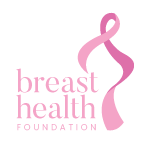The occurrence of male Breast Cancer varies throughout the world. In North America there seems to be an increasing incidence especially amongst black males, with about a thousand cases being diagnosed per year. It is most commonly found in men over sixty. We don’t know how common it is in South Africa but we think between 1-3% of all breast cancers happen in men.
How common is Breast Cancer in men?
Who gets it?
The risk factors for male Breast Cancer are interesting; it is definitely not associated with benign male breast lumps or breast enlargement (gynaecomastia). There does appear to be an inherited component because the lifetime risk of a male to get Breast Cancer if his mother and his sister had Breast Cancer is about 2.5%.
Male Breast Cancer is more common in families who have the BRACA2 gene mutation and in males who have Kleinfelter’s Syndrome (which is the chromosomal abnormality XXY). It seems to be increasing in men who work on electrical lines and factors such as radiation, X-rays and electromagnetic waves have been implicated.
What type of Breast Cancer do men get?
A male Breast Cancer is almost always a ductal carcinoma (the most common sort). Lobular carcinoma is rarely seen in men and when it is it is usually in association with Kleinfelter’s Syndrome. Any variation of ductal carcinoma can be seen in male Breast Cancers including Paget’s disease (cancerous eczema of the nipple). 80% to 90% of male Breast Cancers are responsive to hormones.
Male Breast Cancer is no different to female Breast Cancer. All people have some breast tissue but because men have less, when cancer develops it tends to be more advanced earlier, with chest wall and skin involved. The vast majority of male Breast Cancers present as a painless breast lump. They may have a nipple discharge or nipple changes, and very few are painful. About 5% of these cancers will present with spread to other organs (metastatic disease).
Any unilateral breast mass that is firm, fixed or ulcerated in a man should raise suspicion.
How do we investigate it?
All potential cancers are investigated the same way, whether it is in a man or a woman. The investigations that should be done are a mammogram and sonar. Sensitivity in mammograms is the same in men as it is in women. A core needle biopsy will provide the pathological diagnosis.
Treatment
The treatment for male Breast Cancer is just as the same as in women. It usually involves surgery, oncology (chemotherapy and hormone therapy) and radiation therapy working as a multi-disciplinary team. Men are normally managed with a mastectomy (can be done with reconstruction immediately and a sentinel or lymph node dissection) , followed by chemotherapy and radiation treatments if they are needed. Tumours that are greater than 2cm have twice the risk of returning than those where the lesions are less than 1cm, so it is important to make sure the margins are wide and the cancer is well-treated. Hormone therapy can improve the survival if the cancer is sensitive to hormones.
Although the prognosis is believed to be worse in male Breast Cancer than in female, stage for stage it is actually identical. Because men are often diagnosed at a later stage relative to the size of breast tissue they have, it gives the impression of a worse prognosis.
It is important for men with unilateral breast masses that are firm, to seek medical attention and be assessed appropriately by a breast specialist.
